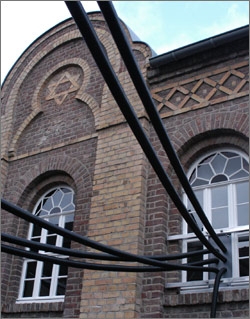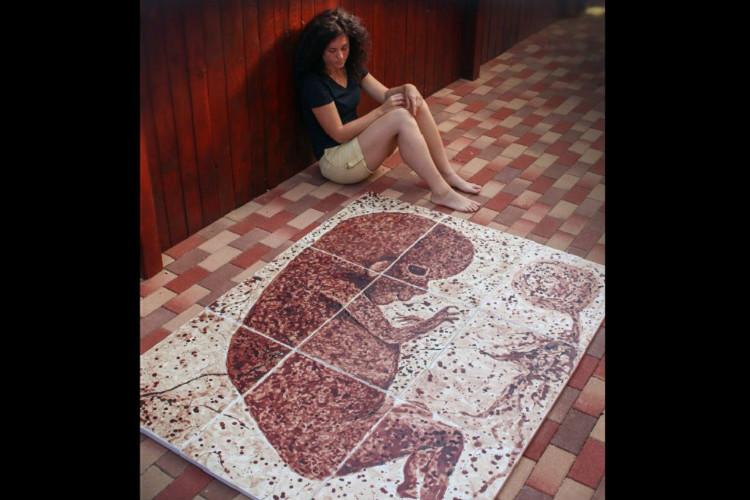
Performance artist Santiago Sierra is known for controversial art pieces that address systems of power that operate in our everyday lives, whether we acknowledge it or not. These operations that Sierra uncovers are usually those that marginalize and/or exploit certain populations within our society. To showcase these systemic injustices, Sierra will employ underrepresented individuals, in exchange for money. For instance, in one of his famous pieces, “160 cm Line Tattooed 4 People,” he hired four prostitutes to have a line tattooed on their back and were given the amount of money that’s equivalent to a shot of heroin. The entire art piece is a video recording of the four subjects getting tattooed and the interactions that occurred. In another piece, Sierra hired homeless women to stand in front of a wall for an hour in exchange for a night at a hostel. Both of these pieces reflect the ideologies of capitalism in which a person must give up their body to perform physical labor all for compensation that isn’t as valuable as their efforts in the first place.
Sierra’s work is known for implicating his audiences. By creating work that suggests injustices we are all aware of but are simply passive about, Sierra puts these issues in public spaces as to never escape them. Because these displays are so out in the open, it makes the voices of these marginalized populations heard and acknowledged. In perhaps Sierra’s most “controversial” work, “245 Cubic Meters,” the artist chose a Jewish synagogue in the city of Pulhein, near Cologne to display his artwork. Sierra connected the exhaust pipes of six cars to the windows using plastic tubes of the synagogue so it would be filled with poisonous, carbon monoxide gas. In his own words, Sierra said this work is “a protest against the banalisation of the Holocaust.” Not surprisingly, many people thought this demonstration was an abuse of artistic freedom and completely insensitive to those of Jewish backgrounds. But is it considered unethical?
When talking about ethics, it usually is in reference to topics related to human nature, such as, abortion, murder, drug/alcohol use, sexual assault, theft, etc. By categorizing art as unethical or immoral is illogical. An artist can be unethical, but the inanimate objects the artist creates cannot be. Even when an artist represents these topics in their artwork, that doesn’t make them immoral for talking about it. For instance, we wouldn’t categorize Picasso as a mass murder for creating Guernica. The issues we tend to see as unethical are real, human realities, and art helps communicate these realities to its audience(s). Despite how Sierra depicted an event related to the Holocaust, he is still referencing a terrible event in our global history, and one that many people are uncomfortable talking about. The “despicable” way Sierra used a synagogue filled with carbon monoxide to reference a gas chamber is a direct commentary on the despicable actions Hitler committed against the Jewish community. Sierra is making these groups feel seen and he is empathizing with them, not making their experiences of discrimination a light-hearted situation.







